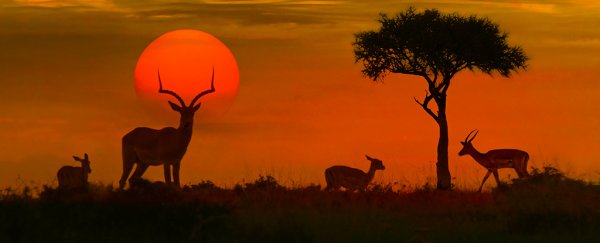The World Wide Fund for Nature (WWF) has released its latest summary of the state of Earth's biosphere. You don't need depressing headlines to tell you it isn't full of good news.
Between 1970 and 2014, populations of vertebrate animals declined by an average of 60 percent. Freshwater animals have it even worse, with drops of about 83 percent. Plastic waste is up. So is deforestation. We need to act, says the organisation.
"It is time the world comes together to deliver an urgent, ambitious and effective global agreement for nature, as the world did for climate in Paris in 2015," is the call to arms in the WWF in the 2018 Living Planet Report.
Putting aside arguments on whether the Paris Agreement is an effective way to combat climate change, it's clear something needs to be done to avoid ongoing environmental catastrophe.
Every two years, the WWF takes a look at trends that sum up the general health of ecosystems around the globe, using them to make an assessment on six indicators that describe the resilience of global ecology.
These involve estimating changes in population size, the extent of species habitats, extinction risks, biodiversity, human habitability within planetary boundaries, and the impact of our own ecological footprint.
Aside from assessments on each of these areas, the report is packed with depressing pieces of trivia.
For example, did you know current trends could see less than 10 percent of the planet's land being free of human impact by 2050?
Did you also know that 90 percent of the world's seabirds are estimated to have fragments of plastic in their stomach, compared with 5 percent in 1960?
It's easy to get overwhelmed by the magnitude of the figures, especially when it reminds us just how much we rely on biodiversity as a source of food, pharmaceutical inspiration, and carbon sequestration.
In an attempt to put an economic figure on ecological contributions, some US$125 trillion dollars per year depends on healthy natural resources.
When it comes down to it, numbers like these do little to demonstrate the extent of economic impacts that declining populations and fading biodiversity has on communities around the globe.
That shocking 60 percent figure of wildlife loss is a global average. Some will fare better than others, making it a political issue in line with trade and immigration. In the tropics, the figures get especially bad, with South and Central America suffering a drop of 89 percent between 1970 and 2014.
One of the report's indicators describes the planetary boundaries – safe zones defining the limits of critical processes humans rely on. These include things like integrity of the ozone layer, ocean acidity, pollutant levels, and availability of freshwater.
Four of these boundaries we're pushing into the red zone; climate change, biodiversity integrity, flow of vital elements such as nitrogen and phosphorus, and changes to the land itself.
This is the 12th edition of the Living Planet Report produced by the WWF, and involves the input of more than 50 experts from academia, policy, international development, and conservation organisations.
While climate change has been a pressing issue in international politics in recent years – and rightfully so – our general impact on the biosphere itself lacks similar focus.
The closest we have is something called the Convention on Biological Diversity, a treaty ratified by just under 200 nations with the aim of conserving biodiversity while fairly and sustainably using its resources.
But if this report is anything to go by, this convention doesn't go far enough. We're going to need clear goals, not to mention processes to ensure we stick to meeting them.
"A set of collective actions are needed, together with a roadmap for targets, indicators and metrics for reversing nature loss," says the WWF.
We expect things to get a whole lot worse in the 2020 report before they finally get better. Let's hope we're wrong on that.
